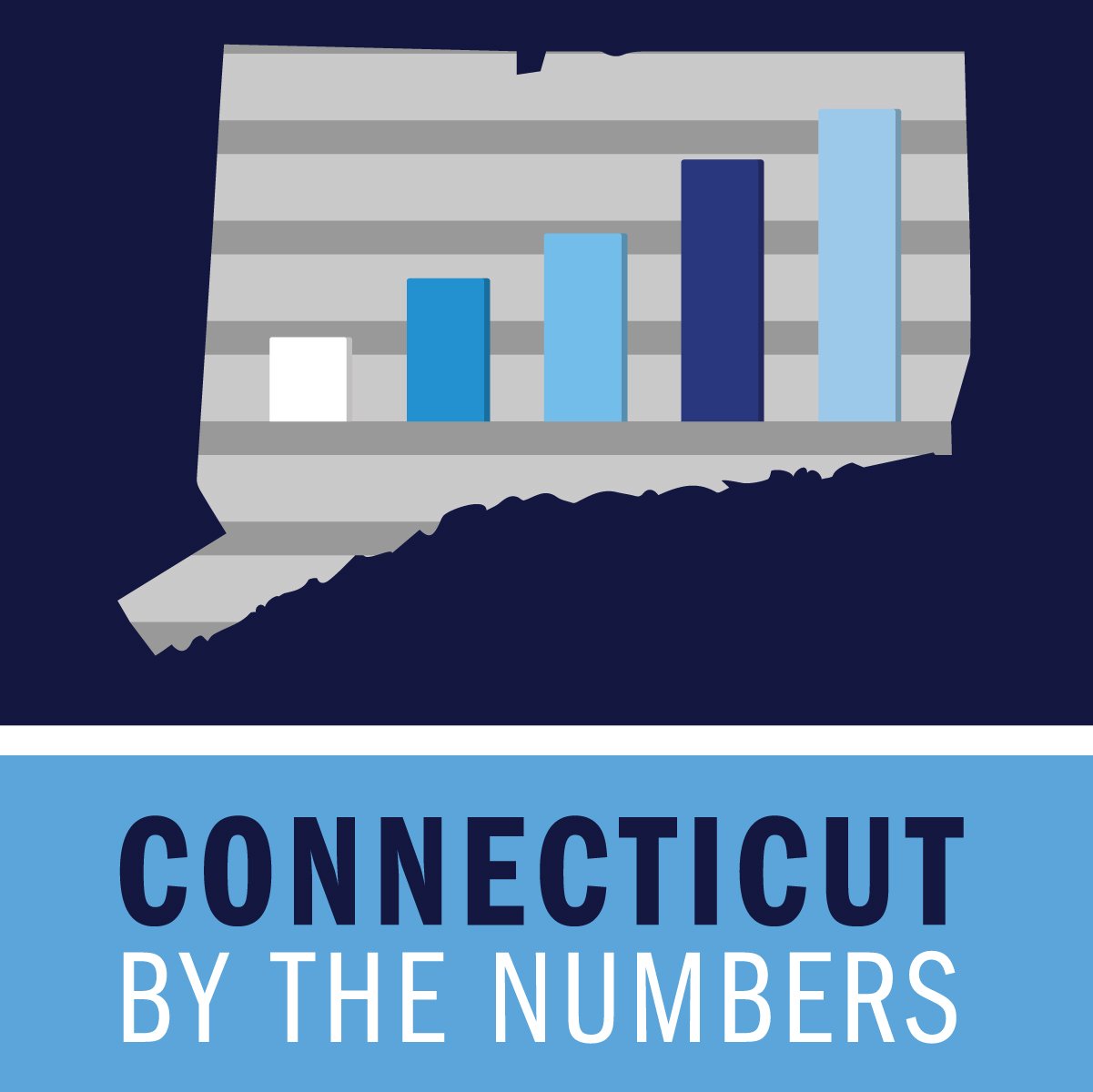NY Settlement with Outlet Mall Owner Eliminates Non-Compete Extending into Southwestern Connecticut
/Most Connecticut residents are likely unfamiliar with Woodbury Common, an outlet mall in the town of Central Valley in Orange County, New York brimming with 240-plus retailers. Due to a contract provision with those retailers that prevented them from opening another location within a 60 mile radius of Woodbury Common, however, the impact of that mall may have been felt throughout southwestern Connecticut for decades.
A settlement in pending litigation reached between the New York Attorney General’s Office and Simon Property Group (SPG), owner of Woodbury Common, and announced late last month, could open the door to new retail outlet opportunities in Southern and Western Connecticut – regions that had long been under the restrictions.
"No business should be allowed to stifle an entire industry at the expense of consumers—but for years, that's exactly what Simon Property Group did to New Yorkers," said New York Attorney General Schneiderman. "Simon's anticompetitive conduct blocked competition and drove up prices for New York consumers. That ends today. I am pleased this agreement will allow for new shopping outlets to finally open within New York City, and make affordable shopping more accessible for residents across the region."
While Schneiderman focused on New York, the possible consumer benefits from the agreement extend further. The region under the now-eliminated restrictions extends beyond New York into Connecticut, including much of Fairfield County – including Norwalk, Stamford, Danbury and Bridgeport - and extending nearly into New Haven. (The straight line distance from Central Valley, NY to New Haven is 62 miles; to Milford is 55 miles.)
In a press release, Simon said Woodbury Common's 60 mile radius provision has been used since 1985, well before SPG acquired Woodbury Common as part of its 2004 acquisition of Chelsea Property Group. The statement pointed out that Woodbury's radius provisions have been upheld as lawful, reasonable and consistent with industry practice in the courts, as recent as 2010.
“While we have agreed to reduce the reach of the radius provisions in Woodbury Common leases, these provisions will continue to cover Woodbury Common's essential trade area, extending to all of Manhattan,” the company noted.
Simon Property Group described Woodbury Common as “an economic engine for Orange County, the lower Hudson Valley, and New York State,” indicating that “it regularly granted exceptions to radius provisions and understands the importance of competition and consumer choice in the market.” In Connecticut, SPG operates two properties in southeastern Connecticut - Clinton Crossing Premium Outlet in Clinton and Crystal Mall in Waterford.
Reached via the New York State Thruway at exit 16 in Harriman, Woodbury Common Premium Outlets features “the most sought after, high-end fashion and designer retail brands in the world,” SPG said in its news release, highlighting stores including Tory Burch, Nike, Celine, Bottega Veneta, Polo Ralph Lauren, Michael Kors, Burberry, Coach, and The North Face.
As part of the settlement, Simon Property agreed to revise their existing leases with Woodbury Common retailers to remove the radius restrictions; not to engage in exclusionary tactics, including radius restrictions, for the next 10 years; and pay a $945,000 fine to New York State.
Even as negotiations proceeded on the settlement, Woodbury Common announced last month that 10 new retailers would be opening at the premium outlet mall, including Zadig & Voltaire, a high-end French ready-to-wear brand, and Sayki, a Turkish menswear designer. The outlet mall also recently completed extensive multi-million dollar renovations. Simon Property Group, based in Indianapolis, owns nearly 100 outlet malls around the world and is an S&P 100 company.


 Attracting hundreds of women in manufacturing from across the country, WiM's annual Summit is the only national conference of its kind. This networking and educational event features manufacturing plant tours, professional development tracks, industry roundtables, keynote presentations and social events to expand participants' networks.
Attracting hundreds of women in manufacturing from across the country, WiM's annual Summit is the only national conference of its kind. This networking and educational event features manufacturing plant tours, professional development tracks, industry roundtables, keynote presentations and social events to expand participants' networks. any, TRUMPF Inc., and Pratt & Whitney, all on the opening day of the conference on September 13.
any, TRUMPF Inc., and Pratt & Whitney, all on the opening day of the conference on September 13. Engineers, and George Saiz, President & CEO of The Association for Manufacturing Excellence.
Engineers, and George Saiz, President & CEO of The Association for Manufacturing Excellence. Among the host committee members is the Connecticut Business and Industry Association. The New Haven Manufacturers Association and the Waterbury Regional Chamber’s Manufacturer’s Council are among the Supporting Partners for the Summit.
Among the host committee members is the Connecticut Business and Industry Association. The New Haven Manufacturers Association and the Waterbury Regional Chamber’s Manufacturer’s Council are among the Supporting Partners for the Summit.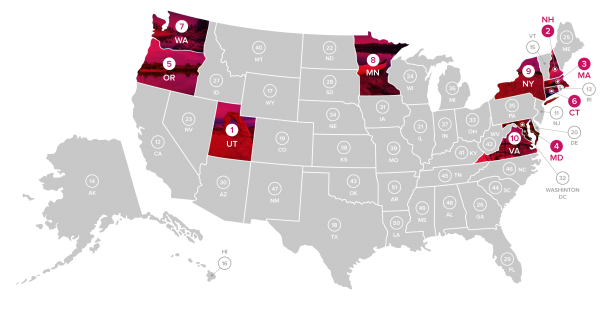
 The analysis points out that a main reason why people don’t have access to broadband internet is due to a lack of income. Cited is a Pew Research poll that found 23 percent of people making under $30,000 per year don’t use the internet, possibly because of the high price for something they don’t consider a basic need. Most rural schools across the country still lack access to fiber and pay more than twice as much for bandwidth.
The analysis points out that a main reason why people don’t have access to broadband internet is due to a lack of income. Cited is a Pew Research poll that found 23 percent of people making under $30,000 per year don’t use the internet, possibly because of the high price for something they don’t consider a basic need. Most rural schools across the country still lack access to fiber and pay more than twice as much for bandwidth.
 Joining the WFSB sports team in 1980 at age 27, Marshall spend five years at channel 3, moving from the nation’s number 23 TV market to number 13 when he relocated to Miami in 1985. At the time, he became the first black sports anchor in South Florida, according to published
Joining the WFSB sports team in 1980 at age 27, Marshall spend five years at channel 3, moving from the nation’s number 23 TV market to number 13 when he relocated to Miami in 1985. At the time, he became the first black sports anchor in South Florida, according to published 





 In Hartford, the university intends to “interweave top-tier academic programs with the vitality and unique educational and service opportunities offered by Connecticut’s capital city.” The campus – at a cost of $140 million - is anchored by the historic former Hartford Times building as part of a neighborhood campus that includes nearby cultural institutions and state and city government offices, including Hartford Public Library, which will house 12,000 square feet of UConn classrooms, a library collection, and study areas.
In Hartford, the university intends to “interweave top-tier academic programs with the vitality and unique educational and service opportunities offered by Connecticut’s capital city.” The campus – at a cost of $140 million - is anchored by the historic former Hartford Times building as part of a neighborhood campus that includes nearby cultural institutions and state and city government offices, including Hartford Public Library, which will house 12,000 square feet of UConn classrooms, a library collection, and study areas.
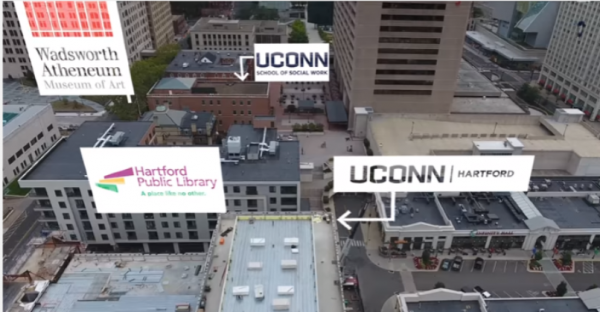 go, the Board of Trustees voted to extend the Graduate Business Learning Center’s (GBLC) lease at 100 Constitution Plaza, and to add two additional floors to the existing space, allocating a total of six floors of classroom, meeting and office space.
go, the Board of Trustees voted to extend the Graduate Business Learning Center’s (GBLC) lease at 100 Constitution Plaza, and to add two additional floors to the existing space, allocating a total of six floors of classroom, meeting and office space. The building is six stories tall and will have 116 apartment units. the school's website explains. The maximum occupancy of the building is approximately 350 students, but because some of the bedrooms will be single occupancy, the target occupancy is 290 students. Plans call for 100 designated parking spaces for students will be available for a small additional charge.
The building is six stories tall and will have 116 apartment units. the school's website explains. The maximum occupancy of the building is approximately 350 students, but because some of the bedrooms will be single occupancy, the target occupancy is 290 students. Plans call for 100 designated parking spaces for students will be available for a small additional charge.


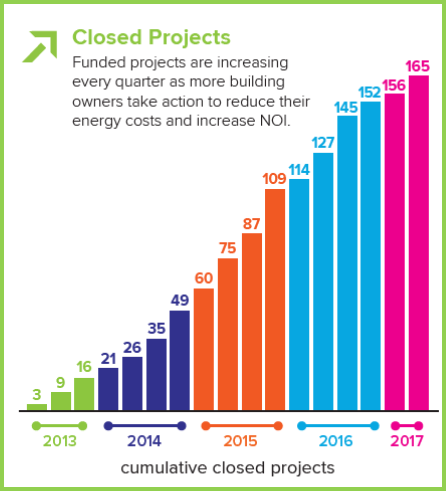 boilers, energy efficiency lighting measures, HVAC systems, and other energy improvements that help building owners to take control of their energy costs.
boilers, energy efficiency lighting measures, HVAC systems, and other energy improvements that help building owners to take control of their energy costs.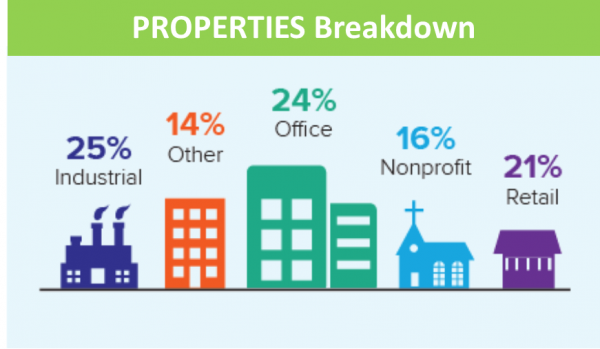 without the support of our contractors, capital providers, municipal officials, and other stakeholders who have contributed to the C-PACE movement,” said Mackey Dykes, Vice President of Commercial, Industrial and Institutional programs at the Connecticut Green Bank. “There is still significant potential for energy improvements for Connecticut businesses and non-profits, and we look forward to bringing cleaner and cheaper energy to more building owners across the state.”
without the support of our contractors, capital providers, municipal officials, and other stakeholders who have contributed to the C-PACE movement,” said Mackey Dykes, Vice President of Commercial, Industrial and Institutional programs at the Connecticut Green Bank. “There is still significant potential for energy improvements for Connecticut businesses and non-profits, and we look forward to bringing cleaner and cheaper energy to more building owners across the state.” make the financing of clean energy deployment more accessible and affordable for consumers and businesses. In 2011 the state legislature created the Connecticut Green Bank, the nation’s first green bank. It uses public funds to attract private capital investment in green energy projects. By leveraging private investment, the Green Bank significantly increases the total amount of financing available for clean energy projects.
make the financing of clean energy deployment more accessible and affordable for consumers and businesses. In 2011 the state legislature created the Connecticut Green Bank, the nation’s first green bank. It uses public funds to attract private capital investment in green energy projects. By leveraging private investment, the Green Bank significantly increases the total amount of financing available for clean energy projects.

 The report noted that “Medicaid beneficiaries are prescribed opioids at twice the rate of the rest of the population, and research indicates they are at 3 to 6 times greater risk of a fatal overdose.” The report also observed the impact of the epidemic on the nation’s prison population: Eighty percent of prisoners have a history of drug abuse; 50 percent are addicted to drugs; 60 to 80 percent of prisoners abusing drugs commit a new crime after release; and approximately 95 percent of addicted prisoners relapse when they’re released, according to National Association of Drug Court Professionals (NADCP) data.
The report noted that “Medicaid beneficiaries are prescribed opioids at twice the rate of the rest of the population, and research indicates they are at 3 to 6 times greater risk of a fatal overdose.” The report also observed the impact of the epidemic on the nation’s prison population: Eighty percent of prisoners have a history of drug abuse; 50 percent are addicted to drugs; 60 to 80 percent of prisoners abusing drugs commit a new crime after release; and approximately 95 percent of addicted prisoners relapse when they’re released, according to National Association of Drug Court Professionals (NADCP) data.
 For example, almost a quarter (23%) of Connecticut workers in science, technology, engineering, and math fields such as healthcare and bioscience were immigrants. Over 36,000 foreign-born Connecticut residents are self-employed, with immigrant-owned businesses generating $1.1 billion income in 2014 while employing 73,047 people. “Immigrants are already playing a huge part ensuring that Connecticut remains a leading innovator in industries like healthcare and bioscience,” according to the analysis.
For example, almost a quarter (23%) of Connecticut workers in science, technology, engineering, and math fields such as healthcare and bioscience were immigrants. Over 36,000 foreign-born Connecticut residents are self-employed, with immigrant-owned businesses generating $1.1 billion income in 2014 while employing 73,047 people. “Immigrants are already playing a huge part ensuring that Connecticut remains a leading innovator in industries like healthcare and bioscience,” according to the analysis.























